2020 NFL Draft prospect rankings: Running backs
theScore's Mike Alessandrini and Dan Wilkins break down the top running back prospects in the upcoming 2020 NFL Draft as part of a position-by-position series.
Top 50
QB | RB | WR | TE | OL
DL | EDGE | LB | CB | S
Running backs
1. Clyde Edwards-Helaire
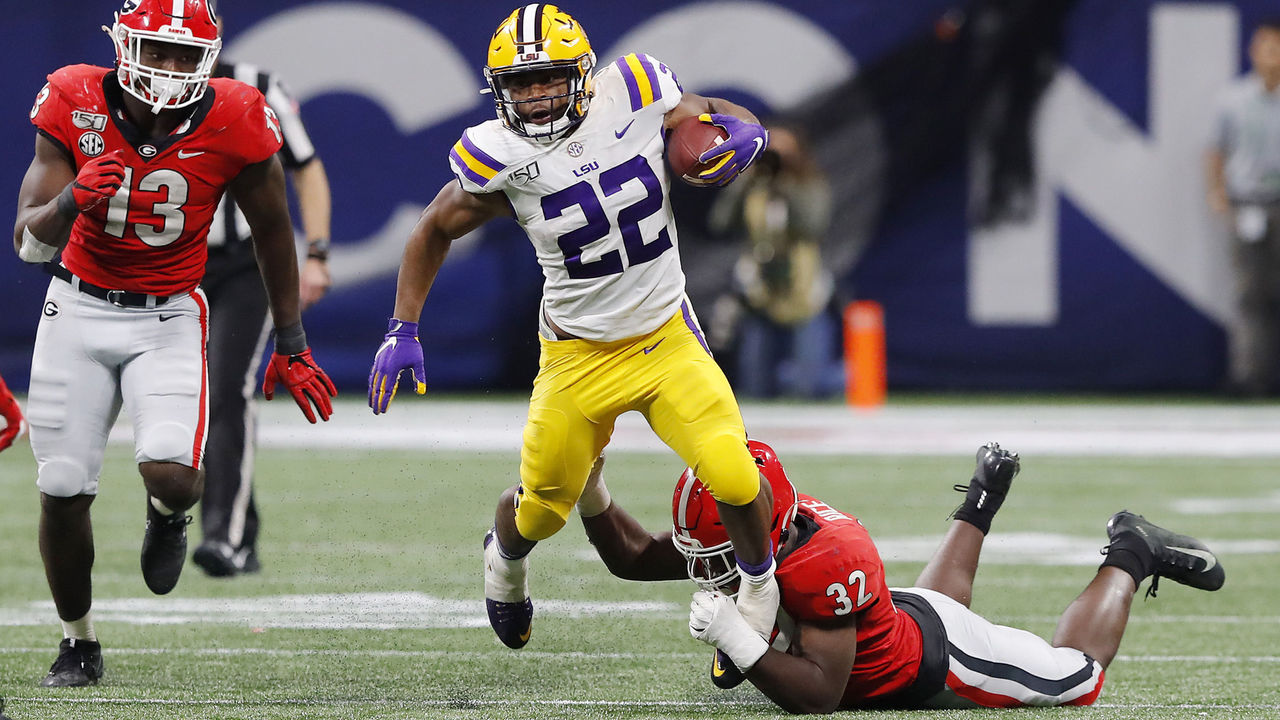
School: LSU
Height: 5-7
Weight: 207 lbs
Positives
- Shifty runner with very quick feet and an ability to make defenders look silly with jukes in compressed spaces
- Compact with excellent contact balance - has a powerful lower body, core strength, and an ability to contort to avoid oncoming tacklers
- Good vision at the line of scrimmage - sets up defenders in the hole
- Plays with high effort and a bruiser mentality
- Good burst to get to the second level
- Very fluid lateral agility and changes direction effortlessly
- Lethal spin move to bounce off defenders
- Highest broken tackle rate among running backs in his class
- One of the most productive receivers out of the backfield in his class - soft hands and advanced routes led to 55 receptions in 2019
- Limited wear on his tires - only one full-season workload
Negatives
- Doesn't possess ideal breakaway speed
- Just one year of elite college production
- On the small side for his position
Bottom line
Similar to Joe Burrow, Edwards-Helaire enjoyed a breakout 2019 campaign and played a major role in LSU's championship run. Despite just one year of production, the All-SEC rusher is the gem of this year's running back class because he's already advanced at parts of the game most prospects take years to master. His receiving chops and ability to make defenders miss make him a perfect fit in today's NFL. The former Tiger may not be a home-run hitter, but he's explosive, extremely fluid, and his compact rushing style gives him an advantage in absorbing hits. Edwards-Helaire is very difficult to tackle and generates yards after contact on nearly every play. Don't let his physical limitations fool you.
Grade: Rounds 1-2
2. D'Andre Swift
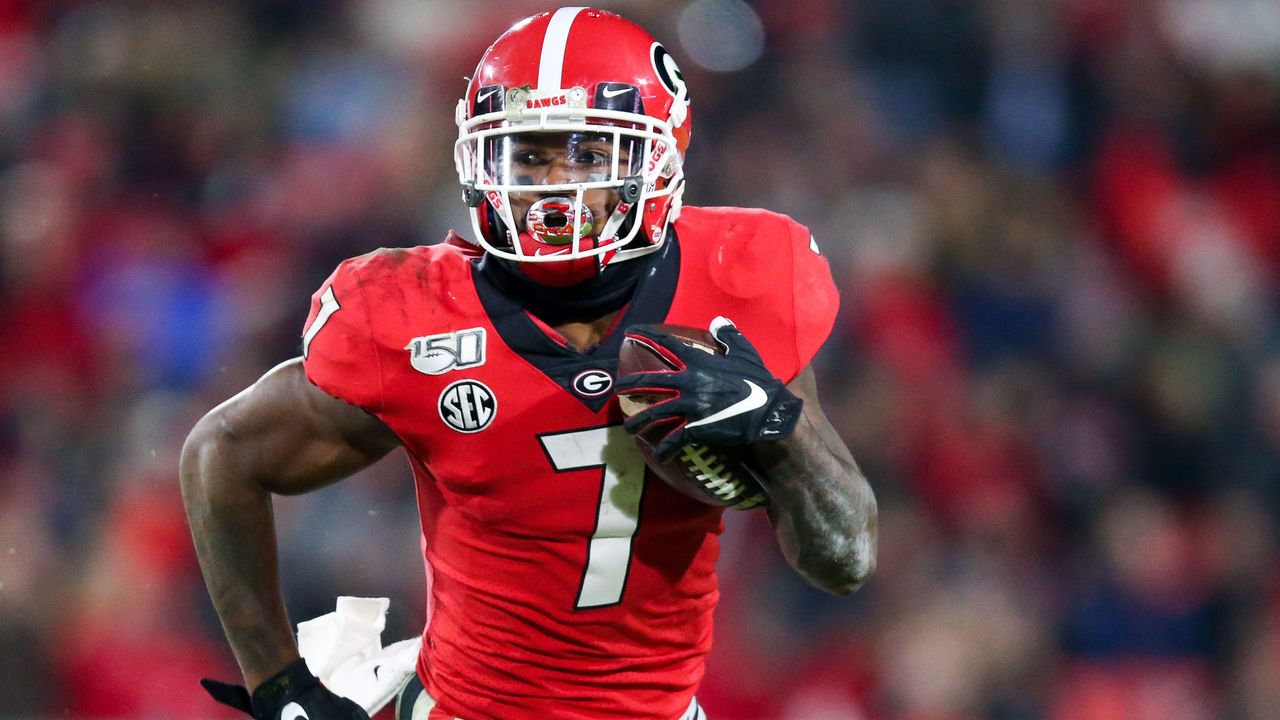
School: Georgia
Height: 5-8
Weight: 212 lbs
Positives
- Three seasons of production in the SEC
- Excellent burst through the hole to pick up chunk yardage
- Great blend of speed, explosion, and power
- Quick feet and shifty - cuts on a dime to avoid tacklers in the open field
- Very good outside runner - if defenses don't contain the edge, he can make a big play
- Quick to diagnose running lanes at the line of scrimmage
- Always keeps his legs moving to gain extra yards - an effective short-yardage rusher
- Graceful movement skills in the open field and changes direction effortlessly
- Flashed ability to run routes out of the backfield
Negatives
- Not a consistent weapon as a receiver and had issues with drops
- Can lose yardage trying to make big plays instead of safe decisions
- Tested like an average athlete at the NFL combine
Bottom line
After a productive career against college football's stiffest competition, Swift joins the draft pool as one of the safer offensive prospects in his class. He possesses a number of traits NFL teams covet while offering very few weaknesses. The former Bulldog became one of college football's most elusive running backs over the last two years by blending speed, lateral agility, and power. He's scheme versatile thanks to his diverse skill set. Swift has work to do as a receiver, but he has the physical tools to develop into a three-down back. His ability to make defenders miss can't be ignored.
Grade: 2nd round
3. J.K. Dobbins
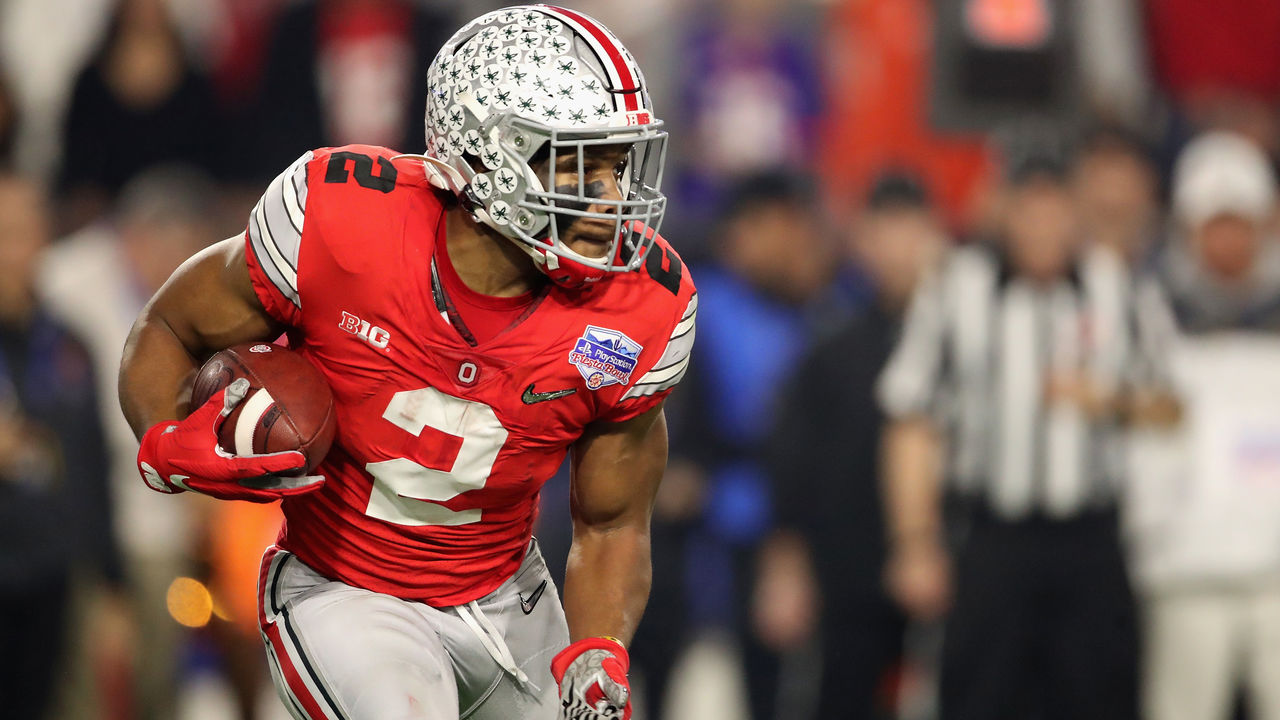
School: Ohio State
Height: 5-9
Weight: 209 lbs
Positives
- Very productive college career - averaged 6.2 yards per carry and scored 43 touchdowns across three seasons
- Excellent athlete for the position
- Compact, strong lower body which results in excellent contact balance
- Possesses ideal breakaway speed and burst
- Powerful in short-yardage situations and always keeps his feet moving
- Good vision - finds the backdoor cut when the initial gap isn't open
- Very smooth feet and maintains speed through cuts
- Fluid hips and able to contort to avoid tackles
- Smooth hands as an outlet receiver
Negatives
- Not the best pass-protector - lacks awareness and the strength to knock defenders off their path
- Route-running out of the backfield appears stiff and needs polish
- Aided by Ohio State's scheme and excellent run blocking
Bottom line
If you're looking for the perfect running back for an outside-zone scheme, Dobbins is your guy. The 2019 first-team All-American is arguably the most explosive runner in his class and will be a nightmare for defenses when his gap opens. His elite contact balance often makes him more difficult to tackle in closed quarters than in the open field. While he'll likely never develop into a top-tier receiver out of the backfield, Dobbins possesses every other tool NFL teams require in a lead tailback.
Grade: 2nd round
4. Jonathan Taylor
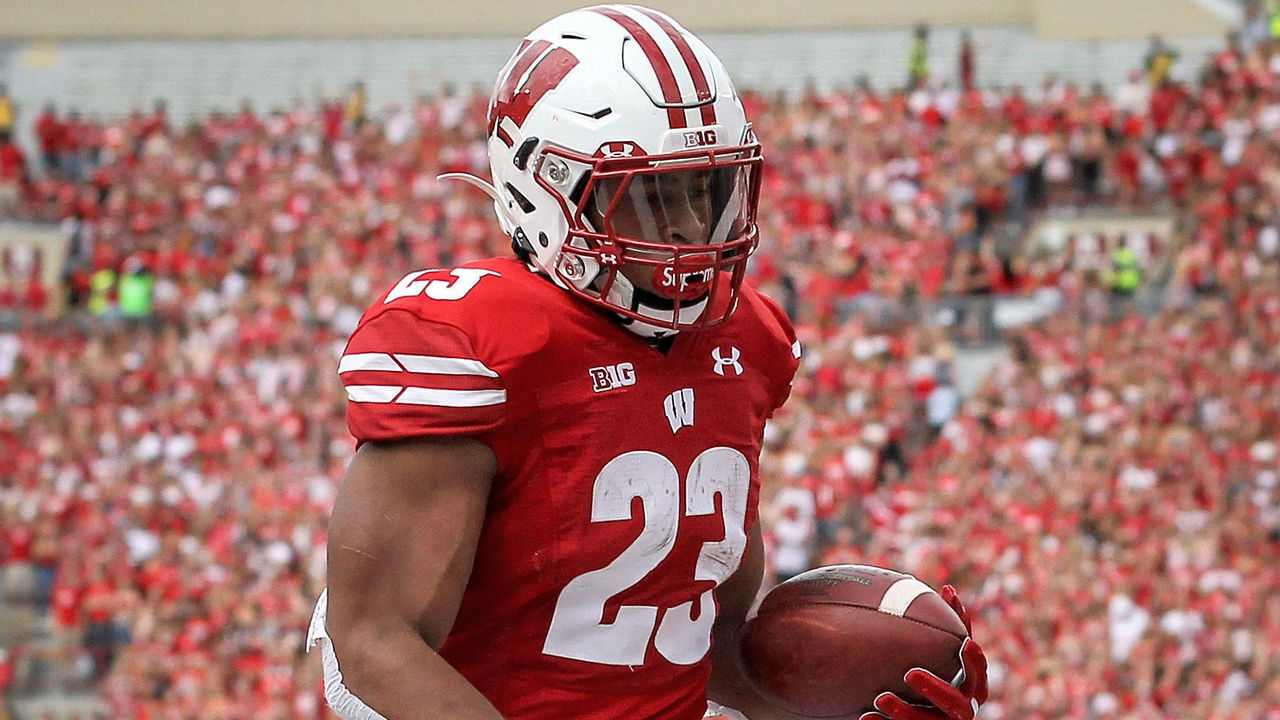
School: Wisconsin
Height: 5-10
Weight: 226 lbs
Positives
- One of the most productive running backs in college football history - two straight 2,000-yard campaigns
- Good size with an athletic build and possesses excellent speed
- Unique blend of power and burst
- Patient in the backfield and lets his holes open before making a decision
- Has the ability to absorb contact and stay balanced
- Runs low, strong, and with very high effort
- Arm tackles rarely work to bring him down
- Improved his skills as a receiver every year in college
Negatives
- Not a polished route-runner and had issues with drops
- 926 career carries in college - already overworked
- Appears somewhat stiff when changing directions and has difficulty regaining speed when he stops
Bottom line
After a historic career at Wisconsin, Taylor stands a good chance at being the first running back selected in April's draft. With blazing speed and a powerful lower body, the two-time All-American is able to pick up chunk yardage and is often difficult to tackle. Though he doesn't change direction as quickly as some of his peers, his athleticism and high football IQ make him an ideal fit in an inside-zone scheme. However, his lack of receiving chops could ultimately hold him back. Taylor may never be a true three-down back in the NFL, but he can do plenty of damage on the ground.
Grade: 2nd round
5. Cam Akers
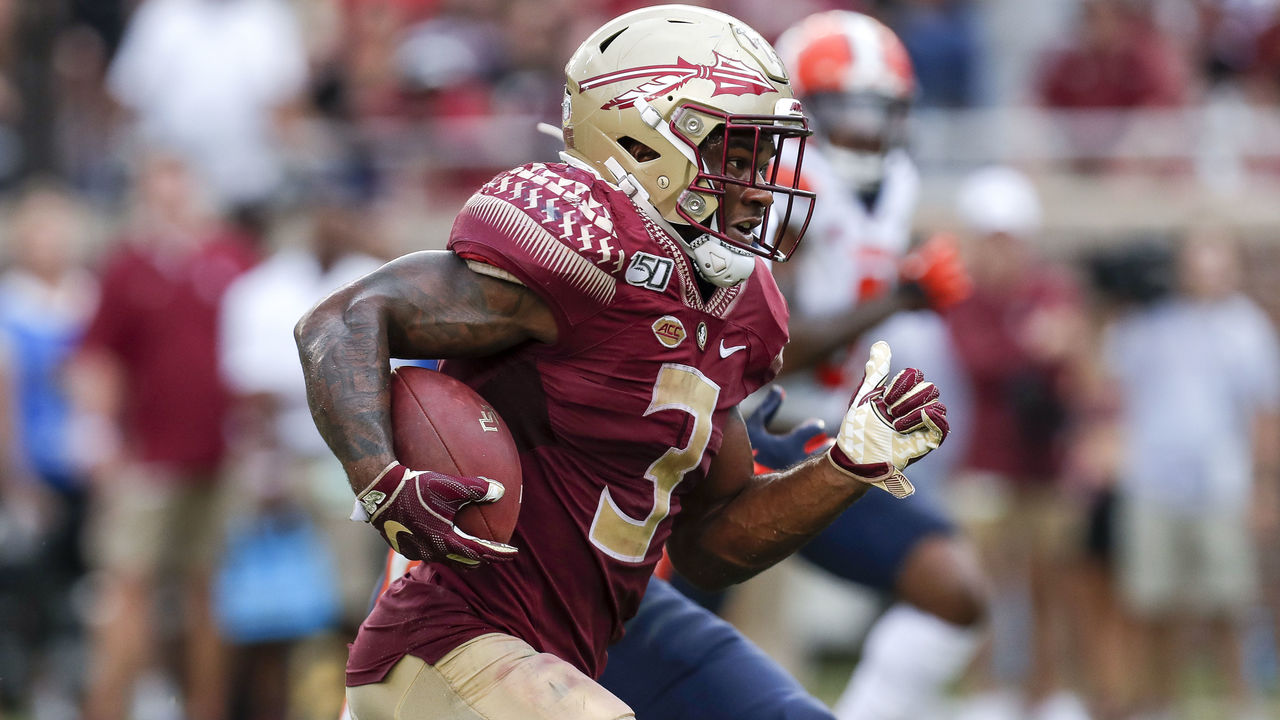
School: Florida State
Height: 5-10
Weight: 217 lbs
Positives
- Explosive runner who can one-cut and burst through a designed gap
- Uses quick feet and good change-of-direction skills to juke past defenders and avoid tackles in the backfield
- Much tougher than his size indicates - he's a well-built athlete who always fights for extra yards and is able to absorb contact
- Violent runner with good leg drive on short-yardage plays
- Natural receiver who ran a number of different routes
- Made the most of a below-average offensive line
- Extremely elusive in the open field
- Advanced pass-protector for a college player
Negatives
- Production was often related to how well his blockers performed in front of him
- Had issues with drops
- Bounced a number of runs outside, which worked in college but may not in the NFL
- Minor ball-security issues - lost fumbles on occasion and a few nearly popped loose
Bottom line
Akers is one of the more intriguing running backs in this year's class. His raw stats don't stack up to some of his peers, but Florida State's blocking unit was incredibly underwhelming during his career. The athletic tailback offers plenty of exciting traits, including a unique change-of-direction ability both behind the line of scrimmage and in the open field. With skills as a receiver and strong reps as a pass-blocker, Akers has three-down potential early in his NFL career.
Grade: Rounds 2-3
6. Zack Moss
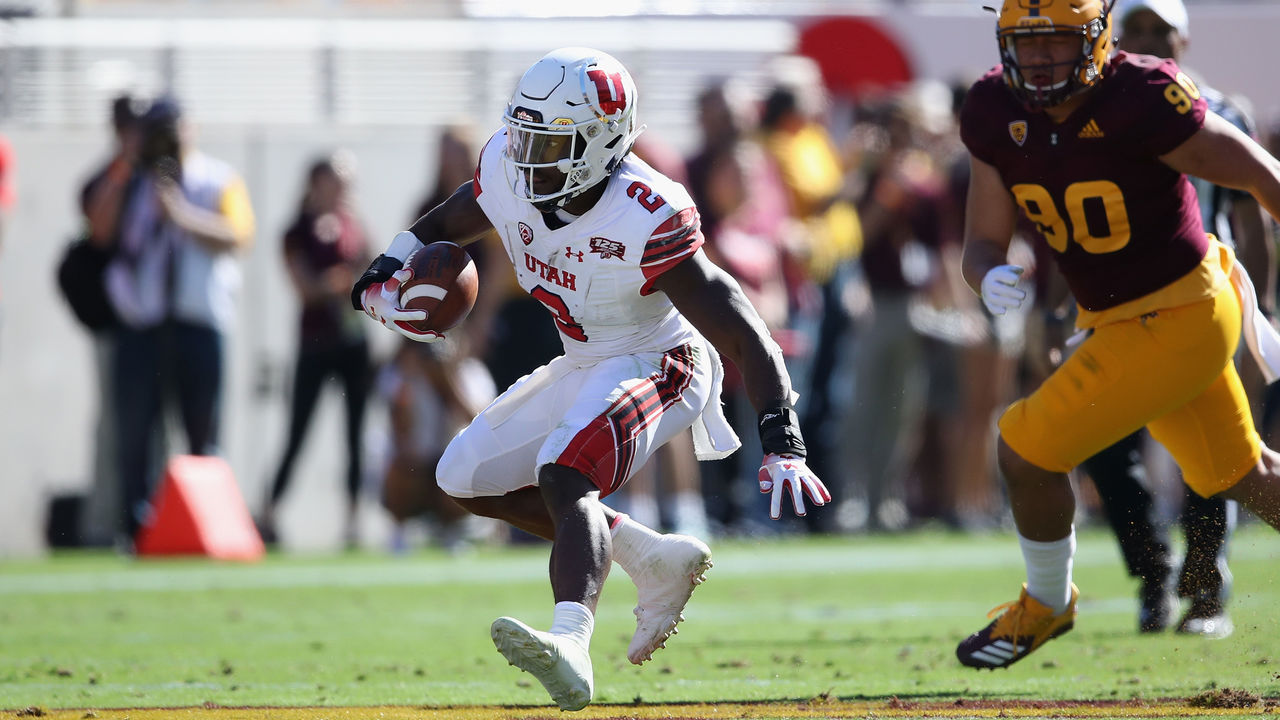
School: Utah
Height: 5-9
Weight: 223 lbs
Positives
- Three years of productive starting experience
- Ideal size and frame with an athletic build and a low center of gravity
- Smooth runner with an excellent ability to cut without losing speed
- Great contact balance and ability to shift his body in a number of directions
- Generates yards after contact - it's rare to see the first defender bring him down
- High-effort player and effective on short-yardage plays
- Very good field vision at all levels
Negatives
- Not the most explosive running back and his speed is below average
- Ran limited routes in Utah's offense
- Often tries to do too much to make a play - worked in the Pac-12 but may not in the pros
- NFL teams don't often desire runners with this much trek on their tires
Bottom line
It's easy to see how Moss' game translates to the NFL level thanks to his elusiveness and vision. The reigning Pac-12 Offensive Player of the Year checks off nearly every box teams look for in a feature back, but he has three full years as a starter under his belt and is undeveloped in the passing game. Moss projects best within an inside-zone scheme with his ability to see cutback lanes when the initial hole is filled.
Grade: 3rd round
7. Antonio Gibson

School: Memphis
Height: 6-0
Weight: 228 lbs
Positives
- Versatile prospect with snaps at running back and receiver
- Possesses ideal speed and athleticism
- Excellent change-of-direction ability as a rusher and route-runner
- Able to separate with explosion in and out of breaks
- Strong lower body leads to short-area quickness
- Dangerous with the ball in his hands
- Good vision and understanding of angles
- Successful kick returner
Negatives
- Primarily played receiver in college - lacks true experience at running back
- Not polished in route-running technique out of the backfield
- Runs with high pad level
Bottom line
One of the most intriguing offensive weapons in his class, Gibson is also among the most unique. He was primarily used as a receiver and gadget runner at Memphis, but his skill set and elusiveness with the ball in his hands translates more to the running back position. However, with his track speed, vision, and burst, Gibson has potential as a versatile player that doesn't necessarily require a primary designation. Add him as an offensive chess piece and mismatch - you won't be sorry.
Grade: 3rd round
8. Anthony McFarland Jr.
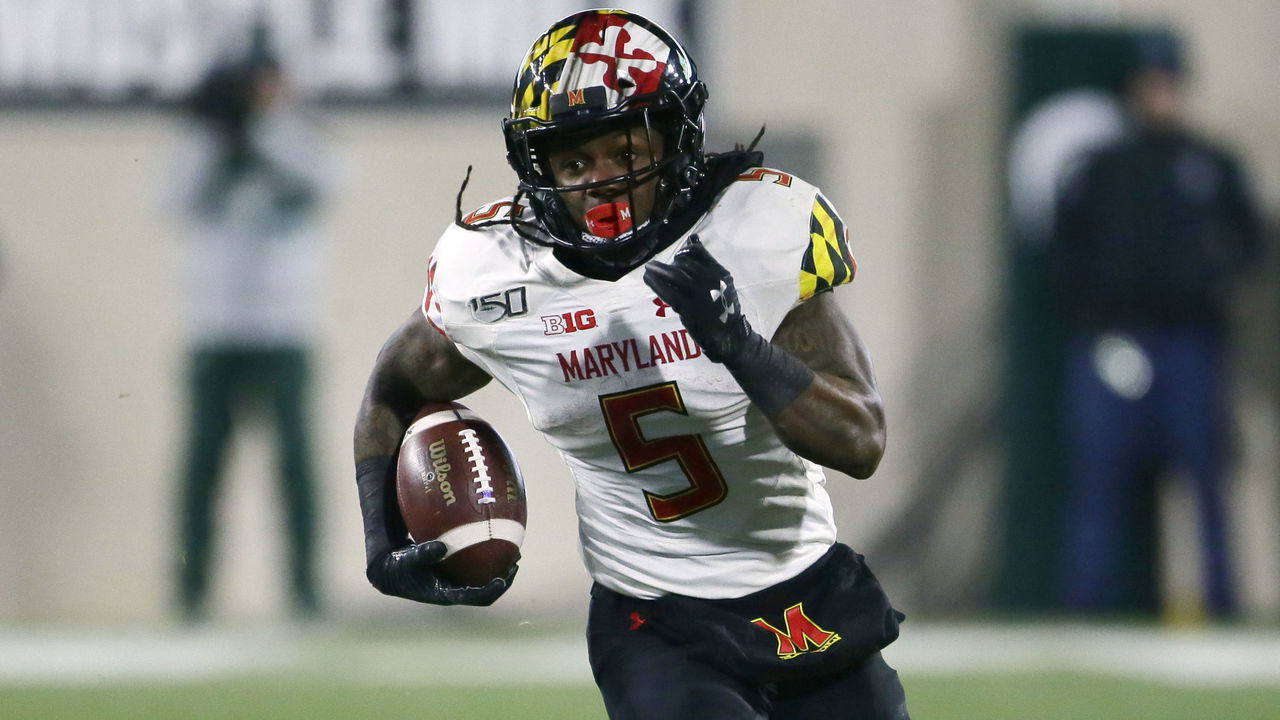
School: Maryland
Height: 5-8
Weight: 208 lbs
Positives
- Young running back that didn't accumulate many touches in college
- Slashing tailback who cuts on a dime and has good contact balance
- Very good speed for his size
- Able to absorb contact well and rack up additional yards
- Still effective on a poor Maryland team in 2019
- Slippery in the open field with a good burst through the hole
- Good vision and is able to work his way through traffic
- Always plays at full speed - never slows down
Negatives
- Neither experienced nor productive as a receiver in college and his pass protection needs work
- Not very effective on short-yardage/goal-line scenarios
- Doesn't possess ideal size or frame
- Below-average athlete for the position
Bottom line
After flashing abilities as a dynamic runner in college, McFarland heads to the NFL in need of some fine-tuning as a receiver. He profiles best as a zone runner, where he can see the hole and burst through it. There are tools here to work with, but McFarland will likely be part of a committee early in his pro career while he works on his receiving chops and pass protection.
Grade: 4th round
9. Eno Benjamin
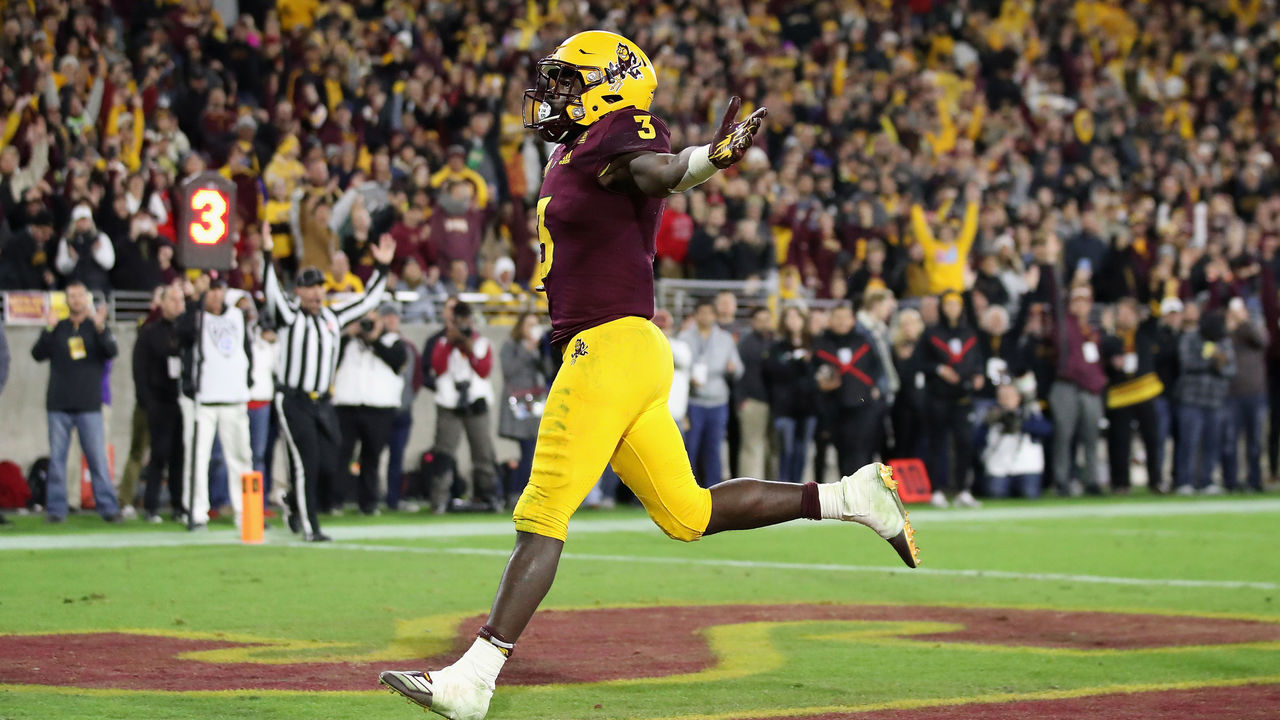
School: Arizona State
Height: 5-9
Weight: 207 lbs
Positives
- Tough, violent runner who refuses to be taken down
- Good athlete for the position
- Very active feet - uses quick cuts and good lateral agility to avoid tacklers
- Natural hands and utilized often in Arizona State's passing game (77 catches over his final two years)
- Good short-yardage runner between the tackles
- Able to adjust body very well and bounce off defenders - high tackle attempts rarely succeed
- 30 total touchdowns over the last two seasons
Negatives
- Average speed and burst keeps him from being a true home-run threat
- Vision isn't his best trait - not very patient and often hits his hole quickly, leading to a handful of negative runs
- Lacks ideal size and functional strength
- Production dropped as a junior after an excellent sophomore campaign
Bottom line
Many expected Benjamin to break out as a junior in 2019, but his inconsistencies mirrored those of the Sun Devils' offense as a whole. The two-time All-Pac-12 selection offers enough tools as a runner and pass-catcher to see time as a third-down back early in his career. While he plays big, Benjamin likely doesn't possess the size or power to be a full-time lead rusher in the pros. His best fit is in a power-run scheme where he can be assigned gaps.
Grade: 4th round
10. Darius Anderson
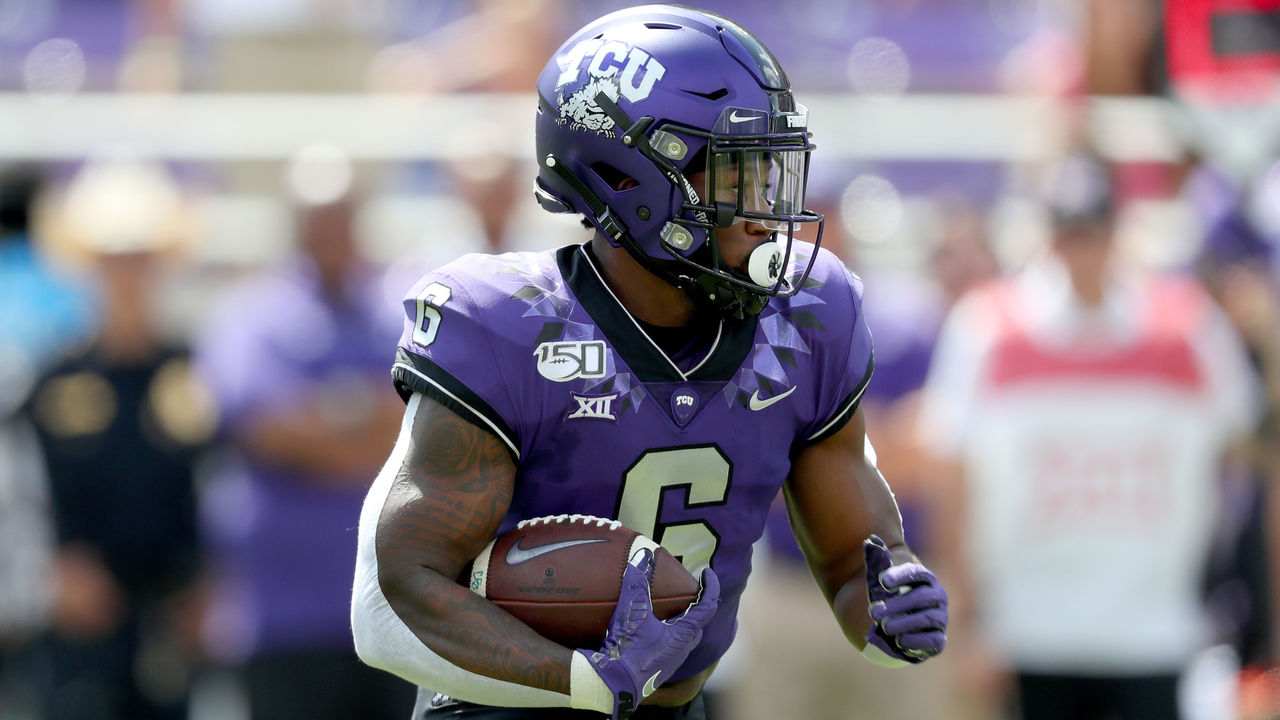
School: TCU
Height: 5-10
Weight: 208 lbs
Positives
- Athletic runner who displayed enough burst to succeed in the pros
- Involved as a receiver in his final college season and made a handful of big plays after the catch
- Drives into contact and keeps his legs moving on short gains
- Elusive in the open field - able to break tackles with his lateral quickness and contact balance
- Effective when bouncing runs outside for positive gains
- Ability to break off long runs
Negatives
- Was never a workhorse back in college
- Has frantic feet and must pace himself more effectively at the line of scrimmage
- Often had more space to work with than NFL defenses will offer
- Below-average vision and decisiveness
Bottom line
Anderson is one of the more intriguing options among running backs likely to be selected on Day 3. While he offers home-run burst and skills as a receiver out of the backfield, his lack of vision may not translate in the pros. Still, Anderson has potential as a third-down back and displays passing-game traits many NFL teams covet at the position.
Grade: 4th round
11. Lamical Perine
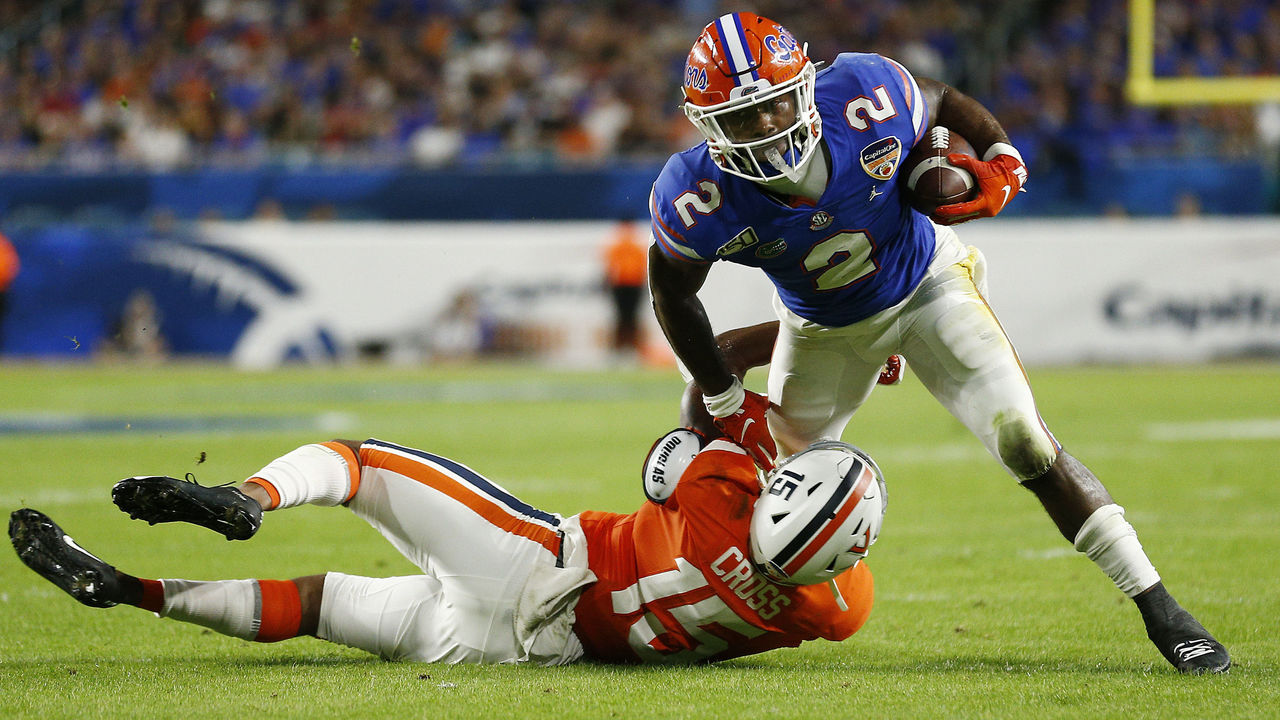
School: Florida
Height: 5-11
Weight: 216 lbs
Positives
- Good size and strength
- Effectiveness as a receiver improved greatly as a senior
- High football IQ to lead defenders into bad tackling angles
- Has good decision-making and vision in the backfield to know which holes to hit
- Powerful legs make him a good short-yardage back
- Good pass-blocker - always knows his assignment
Negatives
- Not very elusive in the open field
- Below-average speed and athleticism
- Usually takes what blockers give him and has difficulty creating more
- Average production and never truly dominated in a season
Bottom line
Perine smartly dropped weight ahead of his senior year to aid his explosion and be more involved in the passing game, but teams will worry he lost power in the process. More of a north-south tailback than one possessing lateral quickness, he's best utilized as an inside runner and displayed enough improvement as a receiver to potentially develop into a reliable third-down back.
Grade: Rounds 4-5
12. Ke'Shawn Vaughn

School: Vanderbilt
Height: 5-10
Weight: 214 lbs
Positives
- Productive career in the SEC despite playing on an inconsistent offense
- Ideal size and frame
- Great vision - makes quick decisions and bursts through the gap
- Physical runner who is difficult to bring down due to a strong body and good contact balance
- Has enough speed to run away from defenders
- Improved his output as a receiver in his senior year
Negatives
- Overall athleticism doesn't compare favorably to others in his class
- Below-average lateral quickness and his cuts won't wow anyone
- Has the ability to catch the ball underneath but wasn't used often in the passing game
- Pass-protection technique needs polishing
- Not very elusive in the open field
Bottom line
Vaughn is a no-nonsense tailback that could eventually develop into an early-down runner in the NFL. Vision and instincts are his best traits, so he fits best into an inside-zone scheme where he can choose his gap early and burst through it. Vaughn currently lacks skills in the passing game, so he's more of a late-round developmental project.
Grade: Rounds 4-5
Other notable prospects
A.J. Dillon (Boston College)
Darrynton Evans (Appalachian State)
Michael Warren II (Cincinnati)
Reggie Corbin (Illinois)
Joshua Kelley (UCLA)